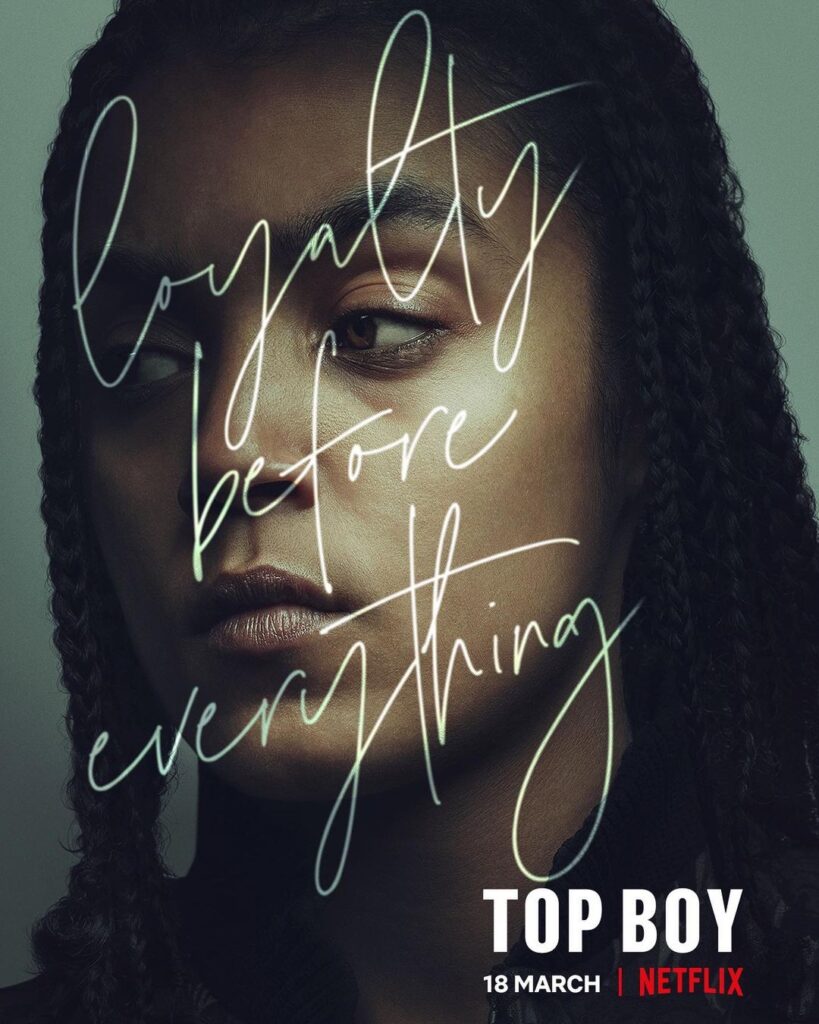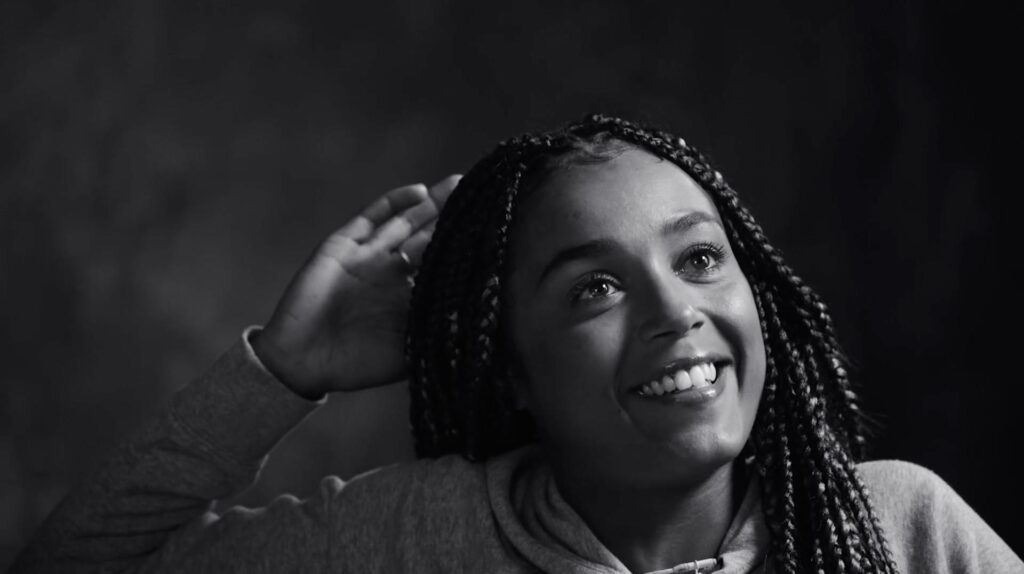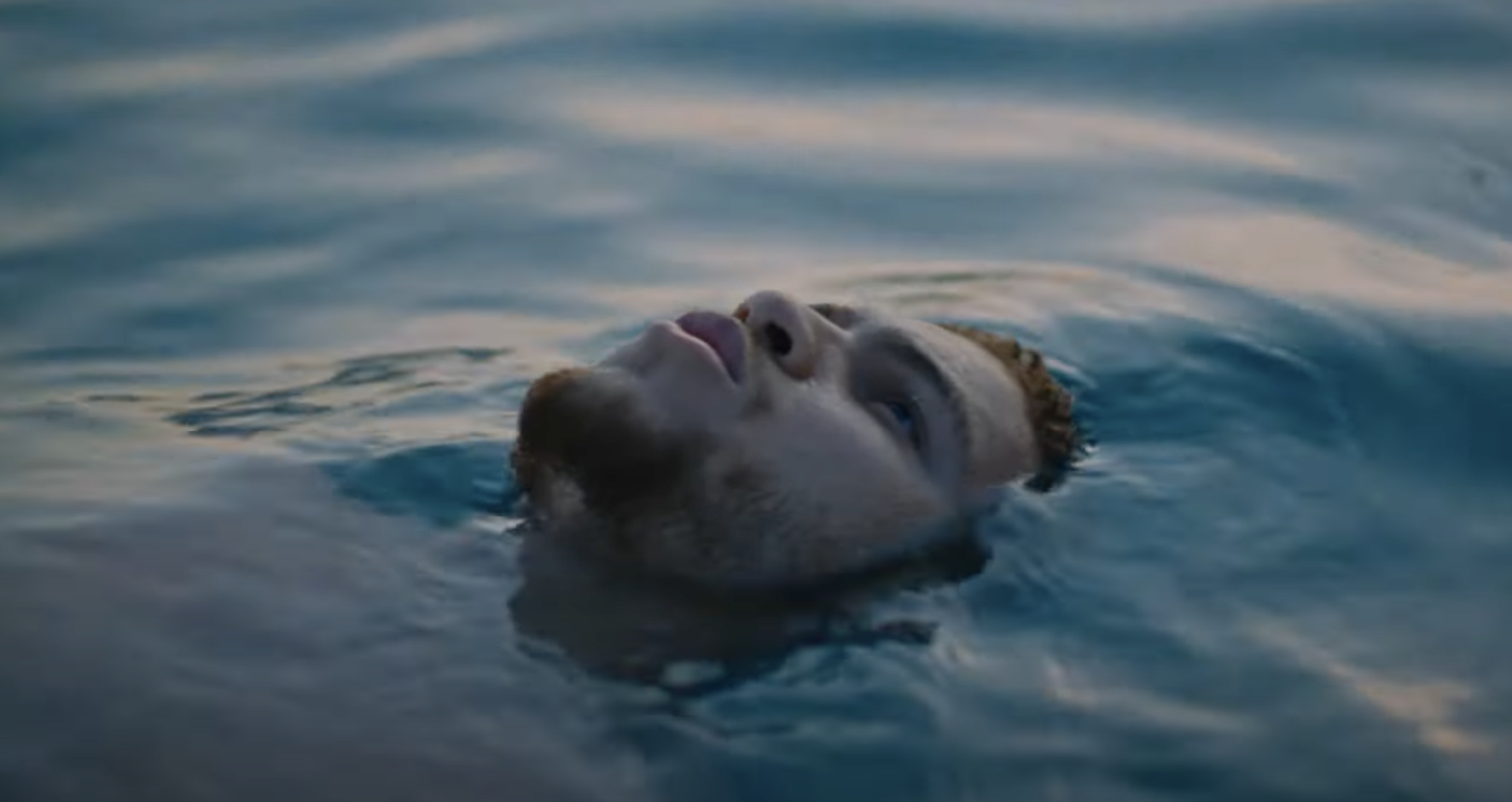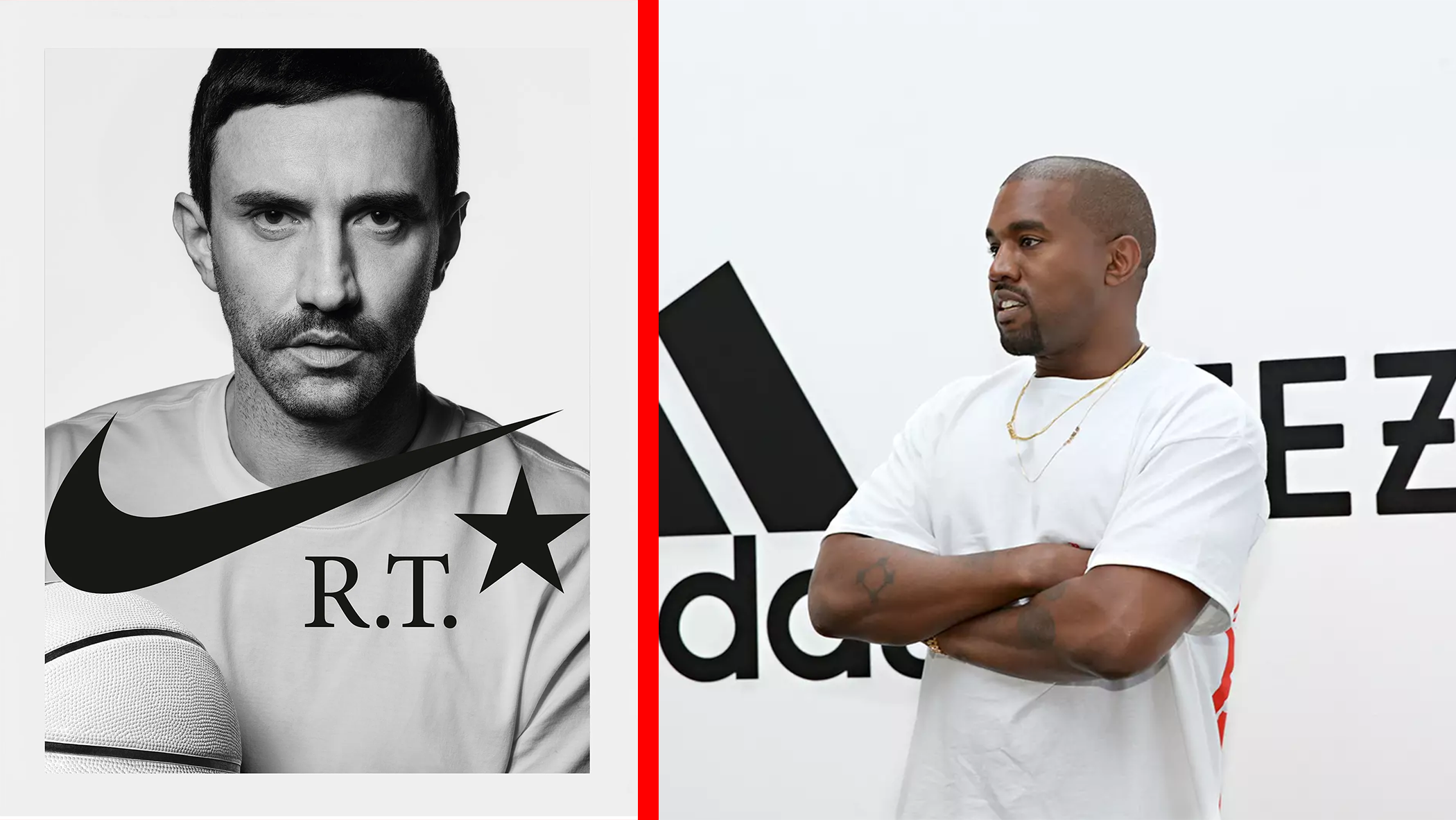GUAP X Netflix Top Boy Mentee Scheme

Learn from some of the talented mentees on Netflix’s “Top Boy Mentee Scheme” as they share unmissable words of advice for emerging creatives
Top Boy is no stranger to putting new faces on the map, with our GUAP26 cover star Jasmine Jobson serving as one of the show’s many gifts. On and off the screen, the team behind Top Boy has always provided ife-changing opportunities to upcoming talent. In Season 1 of Top Boy (2019), Netflix set up mentorships in 9 production departments; Camera, Continuity, Sound, Assistant Directing, Production, Hair & Make-up, Art Department, Editorial and Lighting. A section of this mentorship was the ‘Diverse Directors Menteeship scheme’, which aimed to give mentee’s the potential opportunity to step up to direct episodes of the shows. This season, we were really able to see the amazing talents from these mentorships come to life. We caught up with 3 of the mentees, Kweku, Myriam and Nat, to find out what Top Boy means to them and advice they’d give to young, emerging creatives.

What did Top Boy mean to you before working on the show?
Nat: I’ve loved the show from the early days of it’s first iteration on Channel 4. We don’t normally get a balanced perspective of the world that Top Boy portrays, so it’s important to me that audiences can see and gain some understanding of it. Underneath the exciting action-packed plot, it is rooted in the humanity of it’s characters, however much their circumstances have led them down a certain path.
Kweku: Top Boy symbolises to me the premise on which the characters depicted do what they do; family. The stories highlighted provide an insight into the characters that the media/news broadcasters do not show.
Myriam: For me, Top Boy shed a light on a group of people which may have felt marginalised within society, on the edges, having to forge your own path in life despite the hand you may have been dealt. Top Boy could have easily fallen into the trap of being a social commentary show and yet avoided that through being instead quite deeply intimate and personal – it was moving, the best moments were always the ones where you saw the characters open up, deal with things and just be. That is what felt (and still does) feel so tremendously special about this show.
How did your perception of directing change from the first season to the second season?
Myriam: On the first Netflix season of Top Boy, I came on as a mentee, shadowing Aneil Karia on the last three episodes. I was fortunate enough to observe and learn from him – from pre-production, script reads, casting sessions, to the shoot and also briefly during the editing process to see it all come together. At the time of the mentee scheme I was also finishing my final year at the National Film & Television School where I was studying Directing Fiction. It was in fact so refreshing and reassuring to see that the way we made short films at the NFTS was not at all different to the way bigger TV shows are made – they are literally just on a larger scale.

How was it trying to gain experience without direct access to those in the industry?
Nat: It always helps to know someone that’s willing to give you a chance, but these days I think that good work is far more likely to shine through and get noticed. There’s a key moment when people are young, figuring out what to do and they want to get into film, but it can seem hard if not impossible to do those first jobs that get the ball rolling because they often pay an unsustainably low amount. This makes it very tricky for those who aren’t living at home in or near London, or have a certain amount of financial stability. Therefore, I think this early ’trainee’ stage is really important and that productions need to actively make sure that young people from diverse backgrounds who might not have an easy shoe-in to the industry are getting that opportunity to grow their skills to a level that they can earn a living. The industry has a long way to go, but things are improving and it has never been as diverse as it is now.
What were some things you learnt from being a mentee that directly impacted your role as director this season?
Myriam: I guess I learnt I could do it! I learnt that it isn’t too different from the way I already approach things and therefore just need to have that self belief and confidence. I also found it so useful to be able to familiarise myself with the cast, the recurring locations, and even the crew who welcomed me as part of the ‘Top Boy family’. It meant that returning as a director felt natural, like a great step up and an opportunity I felt so grateful for. I was already familiar with the show and crew by this point and felt very close to it, and therefore even more inspired to come and be at the helm of an episode.
How did the themes of Top boy differ from the films that you have worked on in the past?
Myriam: As a film writer & director, my projects are predominantly focused around female central characters, stories related to womanhood and motherhood – as such, for ME as a filmmaker, it felt like a contrast at first to be thrust into a world which on the surface might feel quite masculine in its energy, pace and themes. Yet the beauty of Top Boy is how this is interlaced with real intimate moments, relationships, plenty of strong female on-screen presence and of course the way it gives space to explore human vulnerabilities in a world that can feel quite hopeless at times.
What are some takeaways that you have taken from such a big production back to smaller production sets?
Nat: I’ve learned how crucial casting is, even for short form projects where an actor might only have a single line of dialogue. It’s just so important to have authenticity, or it will take the audience out of the moment.
The experience has also reinforced how important the story is, even when the story is less obvious (adverts, music videos or even fashion photographs). The story isn’t just told by the characters and dialogue either. It’s the locations, props, production design, clothing, make up. Everything, however small, can contribute to the story.
I’m also working on a feature film with Myriam Raja, who directed an episode of Top Boy this season after taking part in the mentee scheme last year. Directing Top Boy has given us a lot of takeaways and experience for that debut feature, which will be a big project for us but still relatively ’small’ compared to Top Boy!
What are some of the biggest lessons you learned from working on smaller production sets that you applied to the Top Boy set?
Nat: The biggest lesson is that big sets are not scary or very different from smaller sets. Whether it’s a massive blockbuster film, a Netflix series or a student production with a tiny budget, everyone is there to work together to bring a script or an idea to life. I think that the experience you gain from being on any sort of set will carry over onto the bigger projects. The main thing to get used to is the different, more specific roles that are introduced when productions get bigger. For example, understanding the difference between a 1st, 2nd and 3rd assistant director.
Myriam: One thing that never changes is your duty towards the actors – everything else can go wrong, but never settle for anything less than a great performance. I’ve learnt audiences will always forgive bad lighting or a poor frame as long as they can still be emotionally moved by what is happening to the characters on screen, as long as they believe the performance. This is a constant that never really changes whether you are on a short film or a huge blockbuster set.
What did you find you learnt from the actors on this particular set?
Kweku: Having worked on the last two seasons of Top Boy, I have seen the characters develop and grow. I have seen the emerging actors from the series take full ownership of their characters and question their motives in order to bring out the truth

What words of advice would you give to people making the transition from short-form/ more intimate projects to big TV sets with much larger production?
Nat: Firstly, trust yourself and your abilities. It really isn’t that big of a jump and as long as you work hard and are willing to learn, you’ll pick things up quickly.
In many ways, things get easier when you’re surrounded by a large team of professionals who are great at their job and have a decent budget. I personally think that making a music video or student film with a tiny budget where every crew member is doing the job of 3 people is really difficult, so it’s perfect training.
Make sure you understand the script, story and characters so you can be involved in creative conversations and do your job better, regardless of your role. Ultimately, it’s all about story and everything can contribute to the story in it’s own way.
The basics: remember people’s names, turn up on time.
This may sound obvious, but on long form sets, people have to be around each other for weeks or even months, so make an effort to contribute to a positive environment and just be a nice person to be around. It will go a long way the next time your head of department or producer is thinking about who to hire for the next project. There are probably hundreds of people who can do the ’technical’ side of your job during the early / assistant, but it is your personality that will stand out.
Kweku: Do not lean on your own understanding, each person is employed to help you. The more you open your arms to people helping you, the better the project will be. Have faith in your own ability.
Myriam: Directing in itself as a craft does not differ greatly from short film, feature film or TV or even music video – you are telling a story, and your job is to help tell that story as best as you can and make sure everyone else around you is also wanting to tell the same story.
What are 3 of the most important lessons you learnt from this program?
Nat: 1. It’s not that different from a small shoot, there’s just more of it. I’d say the experience has demystified the world of long form TV. Especially considering the circumstances that Top Boy was shot (hundreds of supporting cast, several first time actors, a pandemic, London traffic etc!) I feel like it’s a great experience of a challenging production.
2. With long form narrative, you need to be consistent with characters and remember what they were doing in previous episodes, despite different directors taking on different episodes. This means that production plays a bigger part in keeping everyone on the same page across seasons, and is something that doesn’t really come up on smaller productions. To help with this, the production team will often create a ‘bible’ that tracks all of the characters and sets out the ‘world’ of the show, so that new directors or heads of department (or any of the crew) can refer back to the notes of previous directors.
3. How to budget and produce a TV show!
Kweku: Anything you want to do in life you can achieve
You are always learning and developing
You are not an imposter
Check out the GUAP Arts & Culture section, to discover new art, film, and creative individuals.




![ZINO VINCI’S ‘FILTHY & DISGUSTING’EP BRINGS YOU TO THE CORE OF THE ARTIST [@ZinoVinci]](https://guap.co/wp-content/uploads/2023/10/Zino-4.jpg)





![Remel London’s [@Remel_London] “Mainstream” is a must attend for upcoming presenters!](https://guap.co/wp-content/uploads/2017/02/REMEL-LONDON-FLYER-FINAL-YELLOW-COMPLETE-1.png)